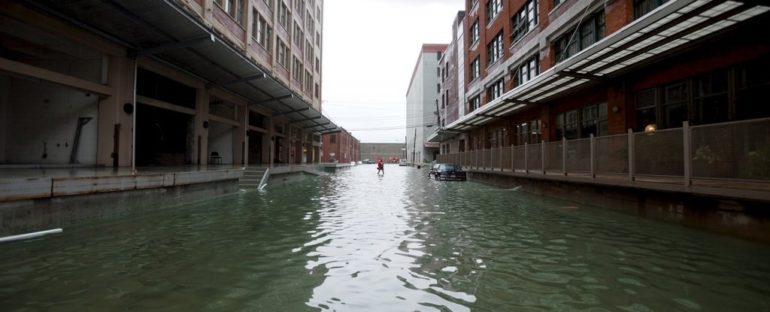The sea is rising, but that’s not all. Scientists say current assessments of global sea-level rise have disregarded an important phenomenon affecting coastal regions – an oversight that means the ongoing specter of sea-level rise is even more ominous than we knew.
While the global average of sea-level rise attributable to melting ice masses in our warming world equates to about 2.6 millimetres per year over the last two decades, that measurement ignores a simultaneous and widespread occurrence where sea-level rise is at its most threatening: subsidence along the world’s coastlines, often the result of human activity.
Less than a month ago, scientists explored the same issue within the limited context of the San Francisco Bay Area, highlighting how the colossal weight of the region was making it sink progressively lower, even while water levels along the shoreline are steadily moving in the other direction.
Unfortunately, this same issue is happening in coastal regions all over the world, and it’s something that vastly alters the outlook of what 2.6 millimetres of annual sea-level rise actually means where it matters most.
“Rapid rates of subsidence in deltas and especially cities on deltas are also human-caused, mostly due to groundwater pumping, also oil and gas extraction, and sediment resupply prevented by upstream dams, flood defenses, sand extraction or mining,” says coastal engineer Robert Nicholls from the University of East Anglia in the UK.
“About 58 percent of the world’s coastal population lives on deltas where land is subsiding.”
In a new study, Nicholls and his team quantified what sea-level rise actually looks like in coastal areas, once subsidence – both natural and human-caused – is taken into account.
According to their calculations, relative sea-level rise in affected regions is effectively happening up to four times faster than the global average otherwise suggests: representing between 7.8 to 9.9 mm per year.
That’s a dramatically different rate of ongoing sea-level rise lapping at the world’s coastlines, and it’s something that’s already affecting the majority of humans living on the planet, given our species’ tendency to congregate in urbanized coastal areas – vulnerable, sinking cities that are the most exposed to rising tides.
“These findings have important implications for coastal management, climate action and sustainability goals,” the researchers explain in their paper.
“For climate mitigation, they mean that contemporary and future global sea-level rise risks and adaptation needs are much higher than previously assessed.”
To adapt to the newly identified pace of the threat, the researchers say we need to look into ways to reduce human-induced subsidence, alongside existing policies working to mitigate the climate crisis, chiefly by reducing heat-trapping emissions caused by burning fossil fuels.
In the longer term, climate change mitigation strategies are the more important, the researchers say, but previous efforts to reduce subsidence in the Netherlands, Japan, and China have shown that we can slow down sinking rates when responsible groundwater management policies are put in place in coastal cities.
As always, it’s important to think positively and act decisively. Still, there’s no denying the drastic implications if we don’t address these findings now – and start to take local subsidence effects into consideration whenever we think and talk about sea-level rise.
It’s not a far-off problem, either. Relative sea-level rise is already affecting millions of people living in the world today.
“The impacts of sea-level rise being experienced today are much larger than the global numbers being reported by the Intergovernmental Panel on Climate Change (IPCC),” Nicholls says.
“One of the main reasons that Jakarta, the capital city of Indonesia, is being moved to Borneo is because the city is sinking due to groundwater extraction from shallow wells… Jakarta might be just the beginning.”
The findings are reported in Nature Climate Change.



